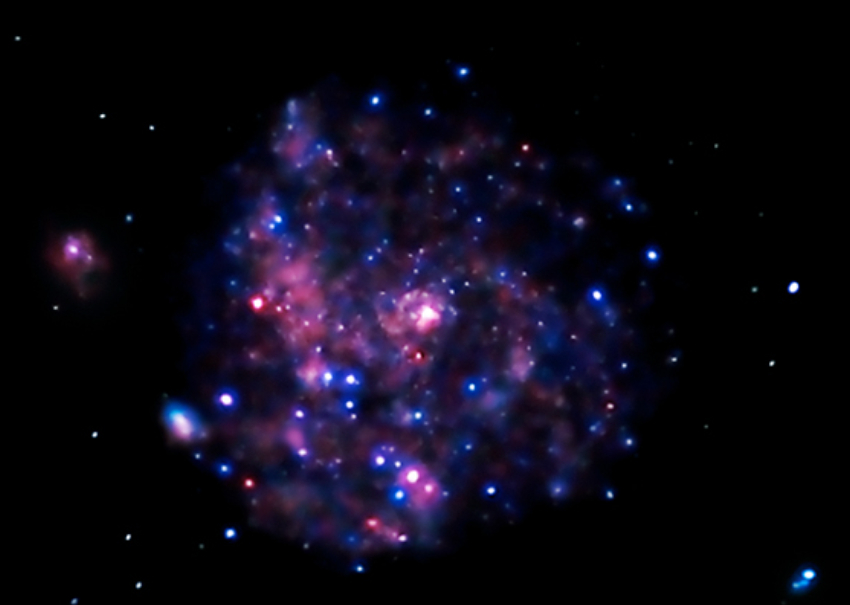
 Credit: NASA/CXC/JHU/K.Kuntz et al.
Credit: NASA/CXC/JHU/K.Kuntz et al.
Hot Spots in M101
Our vantage point inside the Milky Way sometimes frustrates investigators trying to tease out the structure of our Galaxy. Astronomers often have to resort to complex and clever techniques to map out the spatial distribution of the stars, dust clouds and hot glowing plasma. It's often easier to study the structure of external galaxies, even if they are millions of light years away. A particular case in point, and a particularly popular object of study, is the giant pinwheel galaxy M101. This galaxy is a giant spiral similar to, but about twice as big, as the Milky Way. Fortuitously, the galaxy is seen "face-on" to astronomers on earth, so that the entire spiral structure radiating out from the galactic center can be seen in all its glory. The image above is an exceptionally deep image of M101 by the Chandra X-ray Observatory. This is one of the deepest images Chandra has obtained of a galaxy. Purple shows low-energy X-ray emission, while more energetic X-rays are shown in blue. The X-ray emission detected by Chandra shows the location of giant hot clouds of X-ray emitting gas (probably produced by supernovae, or the strong stellar winds from massive stars, or other high energy processes) along with point sources of X-rays produced by black holes, neutron stars, white dwarfs and other exotic objects. Astronomers use images of galaxies like these to understand the evolution of the populations of stars in the galaxy, and the interaction between the stars and the interstellar material within the galaxy. This information tells a tale about the evolution of M101 and by analogy the changes in our own Milky Way.
Published: December 01, 2008
<
HEA Dictionary ● Archive
● Search HEAPOW
● Other Languages
● HEAPOW on Facebook
● Download all Images
● Education ● HEAD
>
Each week the HEASARC
brings you new, exciting and beautiful images from X-ray and Gamma ray
astronomy. Check back each week and be sure to check out the HEAPOW archive!
Page Author: Dr. Michael F. Corcoran
Last modified Tuesday, 27-Feb-2024 10:06:46 EST


